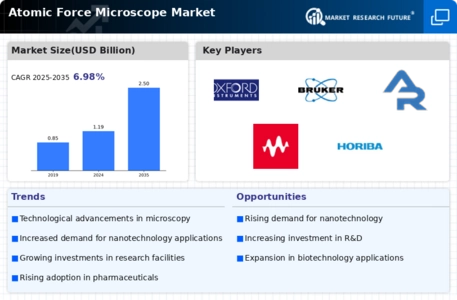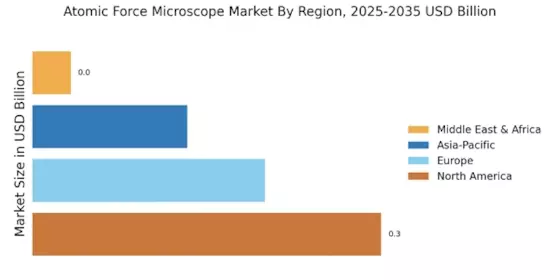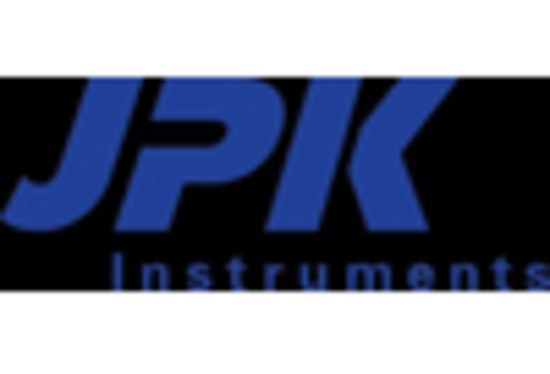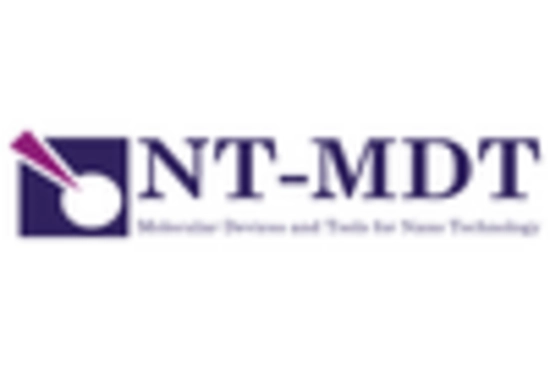Interdisciplinary Applications
The Atomic Force Microscopy Market is witnessing a broadening of its application spectrum across various scientific disciplines. AFM technology is not only pivotal in materials science but is also making significant inroads into biology, chemistry, and nanotechnology. For instance, in the life sciences, AFM is utilized for imaging biological samples at the nanoscale, providing insights into cellular structures and interactions. The increasing collaboration between disciplines is fostering innovation and driving demand for AFM systems. Market data suggests that interdisciplinary research initiatives are expected to contribute to a 15% increase in AFM usage in biological applications over the next few years. This trend underscores the versatility of AFM technology and its critical role in advancing scientific knowledge.
Technological Advancements in AFM
The Atomic Force Microscopy Industry is experiencing a surge in technological advancements that enhance imaging capabilities and measurement precision. Innovations such as high-speed AFM and multi-modal imaging techniques are becoming increasingly prevalent. These advancements allow researchers to obtain high-resolution images and quantitative data at unprecedented speeds. The integration of automation and artificial intelligence into AFM systems is also streamlining workflows, thereby increasing productivity. According to recent data, the market for advanced AFM systems is projected to grow at a compound annual growth rate of approximately 8% over the next five years. This growth is indicative of the industry's response to the demand for more sophisticated analytical tools in various fields, including materials science and nanotechnology.
Growing Investment in Nanotechnology
The Atomic Force Microscopy Industry is benefiting from the growing investment in nanotechnology research and development. As governments and private sectors allocate substantial funding towards nanotechnology initiatives, the demand for advanced characterization tools like AFM is likely to increase. This investment is driven by the potential applications of nanotechnology in various fields, including electronics, medicine, and materials science. Market forecasts suggest that the nanotechnology sector will see a compound annual growth rate of around 10% over the next five years, which will, in turn, bolster the AFM market. The synergy between nanotechnology advancements and AFM capabilities is expected to create new opportunities for innovation and application, further solidifying AFM's role in cutting-edge research.
Increased Demand for High-Resolution Imaging
The Atomic Force Microscopy Industry is currently experiencing heightened demand for high-resolution imaging capabilities. As researchers and industries seek to explore materials and biological samples at the nanoscale, the need for precise imaging tools becomes paramount. AFM provides unparalleled resolution, enabling the visualization of surface structures and properties at atomic levels. This demand is particularly pronounced in sectors such as semiconductor manufacturing and nanotechnology, where minute details can significantly impact product performance. Recent market analysis indicates that the segment for high-resolution AFM systems is expected to grow by 12% annually, reflecting the critical role of advanced imaging in research and development. This trend highlights the importance of AFM technology in meeting the evolving needs of various industries.
Rising Need for Quality Control in Manufacturing
The Atomic Force Microscopy Market is increasingly influenced by the rising need for quality control in manufacturing processes. Industries such as semiconductor fabrication and materials engineering are recognizing the importance of precise surface characterization to ensure product quality and performance. AFM provides critical insights into surface roughness, defects, and material properties, which are essential for maintaining high standards in production. As manufacturers strive to enhance product reliability and reduce defects, the adoption of AFM technology is likely to rise. Recent industry reports indicate that the market for AFM systems in quality control applications is projected to grow by 9% annually. This trend underscores the essential role of AFM in facilitating stringent quality assurance measures across various manufacturing sectors.

















Leave a Comment